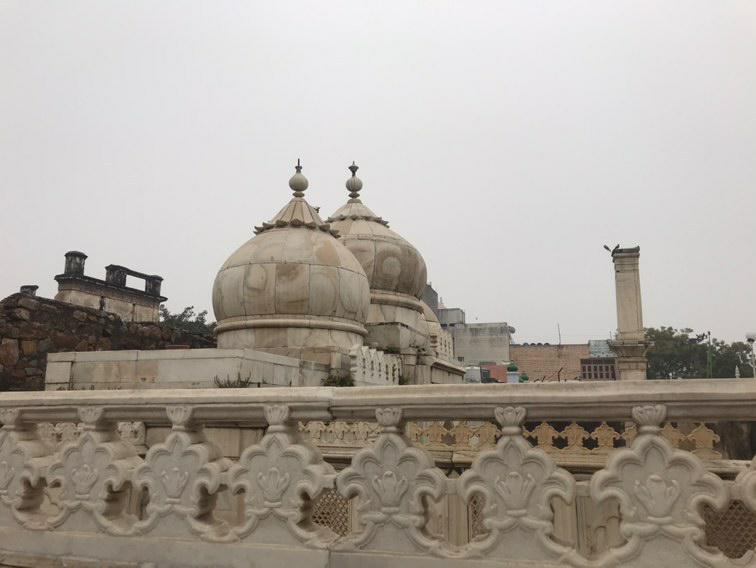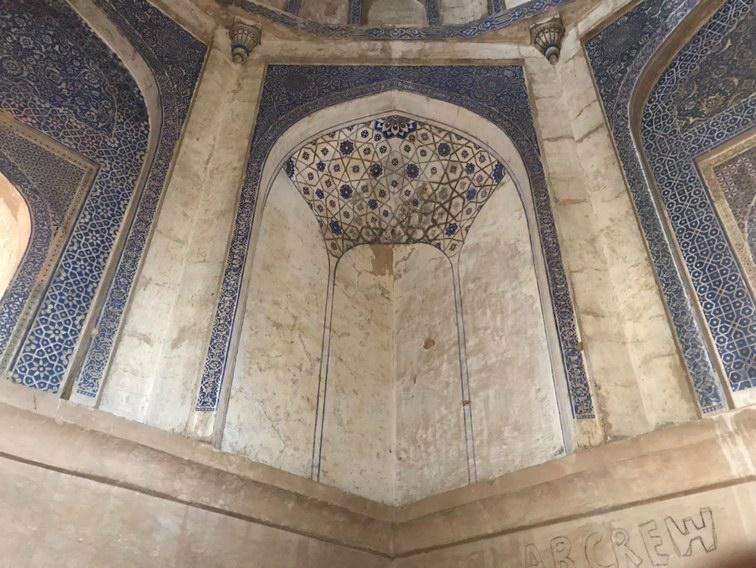1. Quli Khan’s Tomb/ Dilkusha
Quli Khan is believed to be a foster brother of Mughal Emperor Akbar and is also believed to have served in Akbar’s army. The structure was later converted into a summer residence by Sir Thomas Theophilus Metcalfe, a civil servant and agent during the reign of Mughal Emperor Bahadur Shah Zafar.
Metcalfe left the lower part of the tomb as it is and built a four-part charbagh around it, renaming it to Dilkusha or ‘delight of the heart’. The structure is surrounded by thick vegetation and after restoration stands as one of the most glorious tombs of Delhi.

2. Jamali Kamali Mosque and Tomb
One of the most intriguing structures in Delhi, Jamali Kamali mosque stands tall inside an enclosed court, with the tomb of Maulana Jamali to its north. Entry into the tomb is restricted in order to preserve the ornately decorated interiors, the experience of which has often been described as stepping into a jewellery box.
The entire complex was the hospice of Saint Jamali, who was also buried here. The tomb chamber consists of two masculine graves, inviting intriguing conjecture around the identity of Kamali, about whom not much is known.

3. Rajon ki Baoli
Also referred to as Rajon ki Bain, it is one of the most well-preserved baolis of Delhi. Commissioned by Daulat Khan of the Lodi Dynasty, it used to double up as a Sarai or inn for travellers.
A series of steps forms four stages, each of which has rooms that must have provided a cool resting place. The enclosure also includes a tomb that can be accessed through a flight of stairs. The well silts up from time to time and has to be desilted.

4. Zafar Mahal
Zafar Mahal is considered as the last structure built by the glorious Mughal Dynasty before its unfortunate collapse. Built as a summer palace, the structure consists of the tombs of important Mughal kings, including the space designated for Bahadur Shah Zafar’s grave, which lies empty.
Parts of the original enclosure have been encroached upon by residential colonies. However, hints of its former glory can be traced in the architecture of the royal family’s personal mosque.

5. Khwaja Qutubbudin Kaki ki Dargah
Claimed as the oldest dargah in Delhi, it was the hospice of Saint Qutubuddin Bakhtiyar Kaki, a disciple of Muinuddin Chisti who lived during the reign of Iltutmish. It was embellished over time by numerous rulers and became the site of a popular shrine.
It is argued that the Qutub Minar was in reality named after him, as a sign of devotion of the ruler. With a breathtaking view from the Zafar Mahal, it continues to attract disciples and devotees from far and wide.





